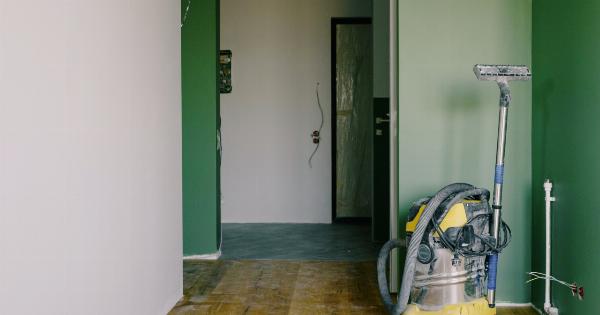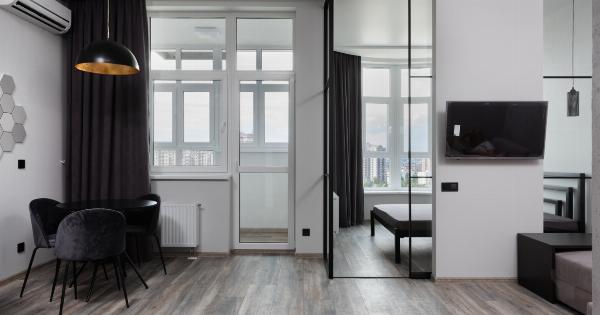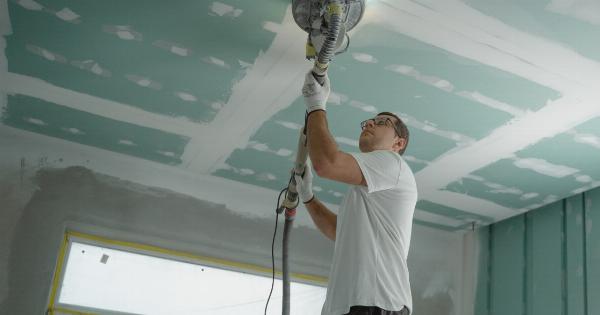Sick Building Syndrome (SBS) is a term used to describe a condition where occupants of a building experience acute health and comfort effects that seem to be linked to time spent in the building.
The symptoms of sick building syndrome can vary widely, and its causes are often complex and multifactorial. Understanding the symptoms, causes, and prevention of sick building syndrome is crucial for maintaining a healthy indoor environment for occupants.
Symptoms of Sick Building Syndrome
The symptoms of sick building syndrome can range from mild to severe and may vary from person to person. Some common symptoms include:.
- Headaches and dizziness
- Fatigue and tiredness
- Irritation of the eyes, nose, and throat
- Dry, itchy skin
- Difficulty concentrating and mental fog
- Allergy-like symptoms, such as sneezing and coughing
- Nausea and vomiting
- Sensitivity to odors
- Respiratory problems, such as asthma and bronchitis
These symptoms may worsen or become more noticeable when individuals are in the affected building and tend to improve when they leave.
It is important to note that these symptoms can also be caused by other factors, such as allergies or illnesses, and therefore a thorough evaluation is necessary to determine if sick building syndrome is the cause.
Causes of Sick Building Syndrome
Sick building syndrome can be attributed to various factors, including:.
Poor Indoor Air Quality
Poor indoor air quality is one of the primary contributors to sick building syndrome.
Indoor pollutants such as volatile organic compounds (VOCs) from cleaning products, building materials, and furnishings can accumulate in poorly ventilated spaces, leading to respiratory irritation and other symptoms.
Mold and Dampness
Excessive moisture and mold growth can thrive in buildings with inadequate ventilation and high humidity levels. Inhalation of mold spores can trigger allergic reactions and respiratory problems, contributing to sick building syndrome.
Inadequate Ventilation
Inadequate ventilation can result in the buildup of indoor pollutants and a lack of fresh air circulation, leading to stuffy and stale indoor environments.
This can exacerbate symptoms of sick building syndrome and increase the concentration of pollutants in the air.
Chemical Contaminants
Chemical contaminants, such as formaldehyde, lead, and asbestos, can be present in building materials and furnishings.
Prolonged exposure to these hazardous substances can have detrimental effects on human health and contribute to sick building syndrome.
Poor Lighting and Ergonomics
Uncomfortable lighting, improper ergonomic design of workstations, and glare from electronic screens can cause eye strain, headaches, and other symptoms that contribute to the development of sick building syndrome.
Prevention of Sick Building Syndrome
Preventing sick building syndrome requires a holistic approach that focuses on improving indoor environmental quality. Here are some preventive measures:.
Effective Ventilation Systems
Ensure that buildings have well-designed ventilation systems that deliver a constant supply of fresh air and remove indoor pollutants. Regular maintenance and cleaning of ventilation systems are also essential.
Regular Inspections and Maintenance
Regular inspections should be conducted to identify and address sources of building damage or moisture intrusion promptly. Any mold growth or water damage should be remediated to prevent the spread of mold spores and mitigate dampness-related issues.
Proper Use and Storage of Chemicals
Chemicals should be properly stored, and their use should be minimized or substituted with safer alternatives when possible.
Adequate ventilation and protective equipment should be used when working with chemicals to prevent their release into the indoor environment.
Improved Indoor Air Quality
Measures should be taken to improve indoor air quality by minimizing the use of volatile organic compounds (VOCs), using low-emission building materials, and conducting regular cleaning and maintenance of ventilation systems and filters.
Ergonomic Design and Lighting
Employ ergonomic principles when designing workstations and ensure appropriate lighting to minimize discomfort and eye strain. Regular breaks and exercises can also help reduce the risk of musculoskeletal problems.
Conclusion
Sick building syndrome can have a significant impact on the health and well-being of building occupants.
By understanding the symptoms, causes, and preventive measures, it is possible to create a healthier indoor environment and prevent the development of sick building syndrome. Regular monitoring, maintenance, and addressing any issues promptly are key to ensuring a safe and comfortable environment for all occupants.





























